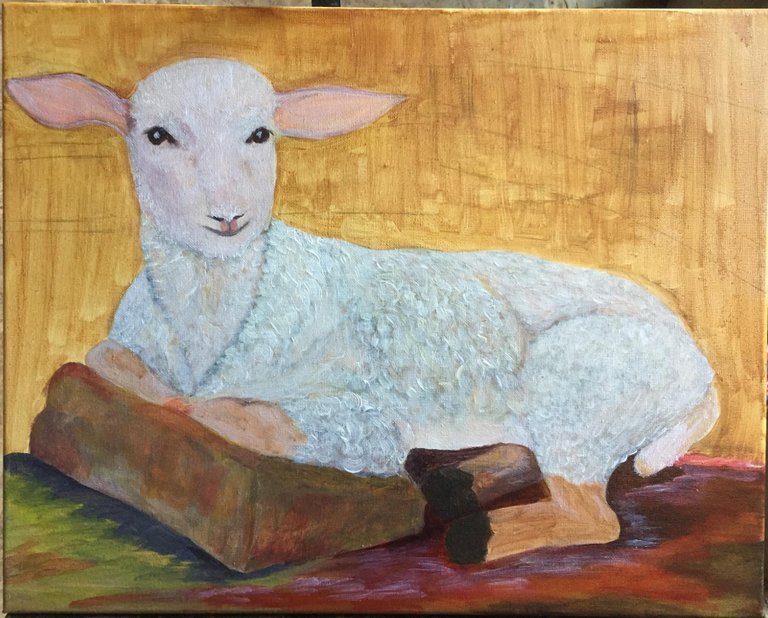
My wife sent me early this afternoon the above painting she created and asked me if it’s beautiful.
I said yes and asked her for whom she was dedicating that art. The eyes called my attention. I asked her, “Whose eyes are those?"and “What is the meaning of those eyes?” It seems to me that the eyes speak something deep. I advise her to write a one-paragraph personal interpretation of her art.
She is somewhat surprised with my initial response to her work. And then she said that the painting is about “suffering and triumph” and acknowledged that the eyes indeed are beautiful.
I asked her a follow-up question. “What or who inspired you to draw that lamb?""How could you say that the painting is about suffering and triumph?”
“I was thinking of the Lamb of God,” she said.
“Then why did you come up with the idea of painting the Lamb of God?”I asked again. “What motivated you to create such an art?”“Is there any particular inspiration or message that you heard that made you paint that lamb?”After asking these series of questions, finally I received a satisfactory answer.
She said, “I intended to give that painting as a gift to Lyn, an ECCM (Evangelical Covenant Church of Manila) member. She has many medical problems like kidney disease and diabetes, and she's going through so much in life, and yet she still has to work.” She added, "I thought of that art as a gift to her to remind her that it is not only us or her who are suffering, but also the church and even the early Christians who died for the sake of their faith, and above all Christ Himself, the Son of God, who took the human form and knew no sin but suffered for our sake."
Referring to Lyn, my wife further explained, “Whatever she’s going through in life, Christ understands her situation, and in Him she can find comfort in whatever trials she’s facing."
Explaining Christ’s death, she said, “I want to remind her that without the suffering and death of Jesus we cannot obtain eternal life. Whatever we are going through in this life is part of God sanctifying us to direct us to Jesus, to put our faith and trust in him.”
Hearing her explanation, I replied, “That’s what I am saying. So that’s the message behind your art. Thank you! I am satisfied with your response. It is now time to write an article about your painting.”
And then I encouraged her, “In all your paintings, recall the particular inspiration that moved you to create them. That to me is an authentic message.”
Before we ended our conversation, I told her that I would add my own interpretation of her work, specifically in relation to the eyes of the lamb.
She said that she made the eyes gentle, or meek, an analogy of Christ as the Lamb of God who willingly obeys the Father’s will despite knowing that he will die a cruel death in the hands of men.
As for me, I found the eyes “mysterious.” They convey a deep message. Or perhaps I have been influenced by my own journey in life, and that’s why I came up with that meaning.
This reminds me of a popular saying that “the eyes are often called the windows to the soul.” They reveal what’s inside that words cannot articulate. They direct us to deep emotions, memories, and secrets—to the silent language that we find normal communication as insufficient. In their depths lies a vulnerable soul, and I hope power of a silent kind. Through our eyes, the soul speaks without sound, communicating the unseen and something mysterious.
Such a divergence in meaning is understandable, for art has a dual nature: that of an expression and a reception. The creator expresses his or her own meaning shaped by her own life’s experiences. Once the art is done and shared, such a meaning can be received and expanded by the viewers, for they too have their own stories of fun and pain that determine their interpretation. As such, the same piece of art can draw out a range of meanings, something aligned with the creator’s intent and others entirely different. This difference highlights the collaborative essence of art. It transcends its creator and evolves into a shared experience where meaning is fluid, shaped by the interplay between what was given and what is received.